Chân Dung Người Lính VNCH
Nha Kỹ Thuật Lôi Hổ - SOG - MACV - 81BCND
Gươm Thiêng Ái Quốc - Hồn Ma Biên Giới
|
********************
Hải kích

1- Chân Dung Người Lính 52 Biet Hai Tram Chau p1
https://youtu.be/LZqMSGHhwg4
2 - Chân Dung Người Lính 52 Biet Hai Tram Chau p2
https://youtu.be/X9SaYpx632A
3 - Chân Dung Người Lính 52 Biet Hai Tram Chau p3
https://youtu.be/cnvlK1iOQys
4 - Chân Dung Người Lính 52 Biet Hai Tram Chau p4
https://youtu.be/OOfOFdBoMy0
********************************
Nha Kỹ Thuật - một đơn vị hoạt động tình báo, chuyên thả điệp viên với những điệp vụ tối mật như xâm nhập vào miền Bắc hay các mật khu của địch ở núi rừng Trường Sơn. Họ là những thanh niên vì tinh thần quốc gia dân tộc và lý tưởng tự do nên bất chấp hiểm nguy, thâm nhập vào đất địch để thi hành công tác. Khi sa cơ, họ bị tù đày, tuổi trẻ bị chôn vùi trong ngục tù tăm tối, bệnh tật, rồi chết dần mòn một cách âm thầm không ai hay biết.
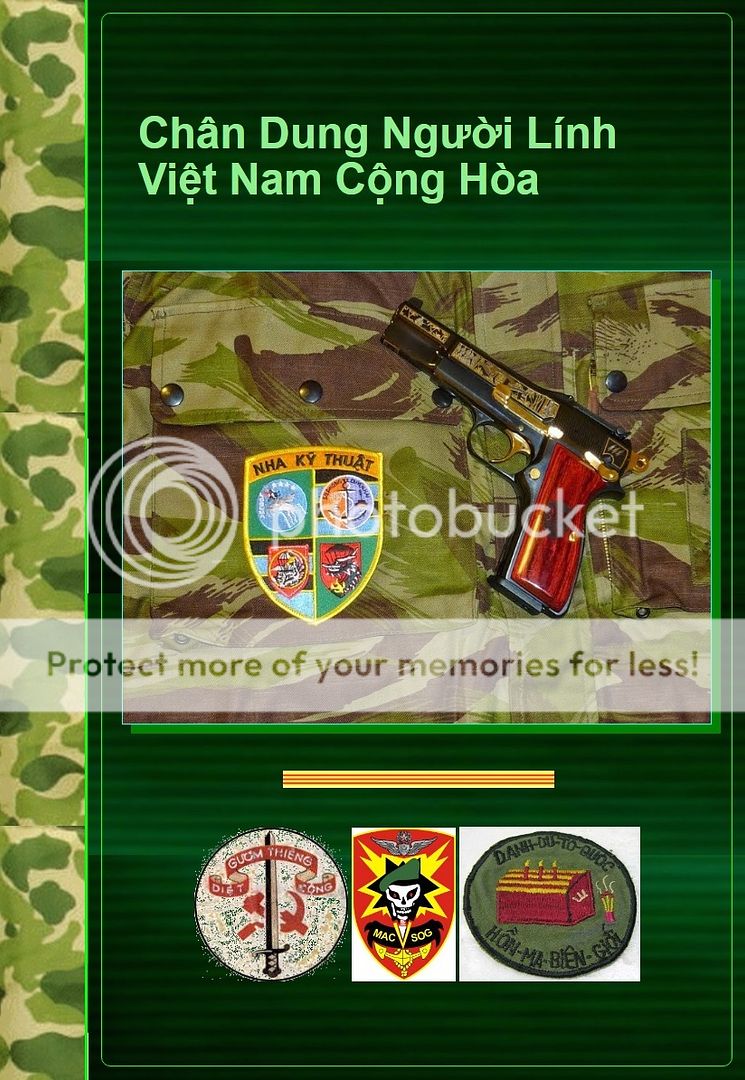
Biệt Hải

1 - Chân Dung Người Lính 51 Nguyen Tram p1
https://youtu.be/QHbMS2LXoWQ
2 - Chân Dung Người Lính 51 Nguyen Tram p2
https://youtu.be/-E8lPFV4BxA
3 - Chân Dung Người Lính 51 Nguyen Tram p3
https://youtu.be/ZgAdquDBIYs
4 - Chân Dung Người Lính 51 Nguyen Tram p4
https://youtu.be/TqoxYM8N4fo

|
Nhảy Toán Nha Kỹ Thuật - Lôi Hổ - Nhảy Toán, Họ là ai?
Cho những anh em mang CAR15, Swedish K, mìn chống chiến xa, dây bắt tù binh, đạn dược, lương khô, gạo sấy, lội bộ ngày đêm xâm nhập trên núi rừng Bắc Việt những mật khu trong Nam và đặc biệt cho những Chiến Sĩ VNCH chiến đấu anh dũng vì lý tưởng Tự Do đã vĩnh viễn nằm xuống trên quê hương thân yêu.
26

1
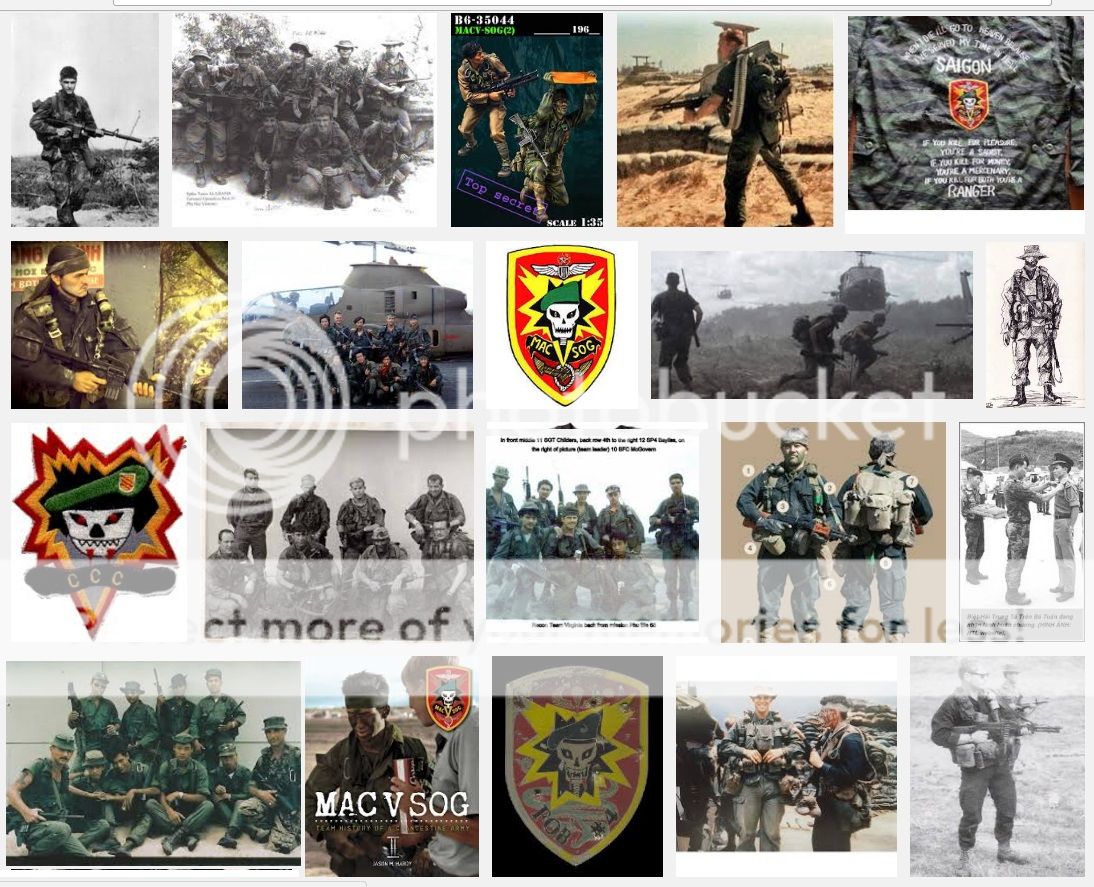
|
2
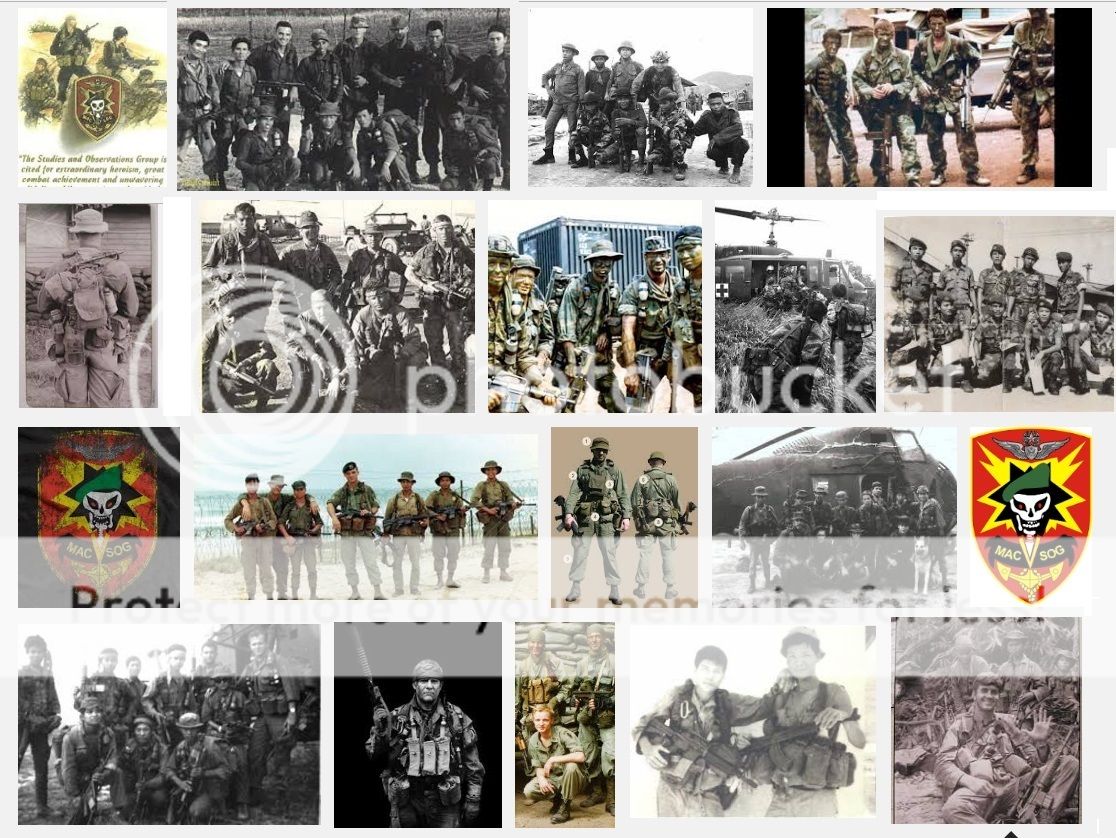
|
3
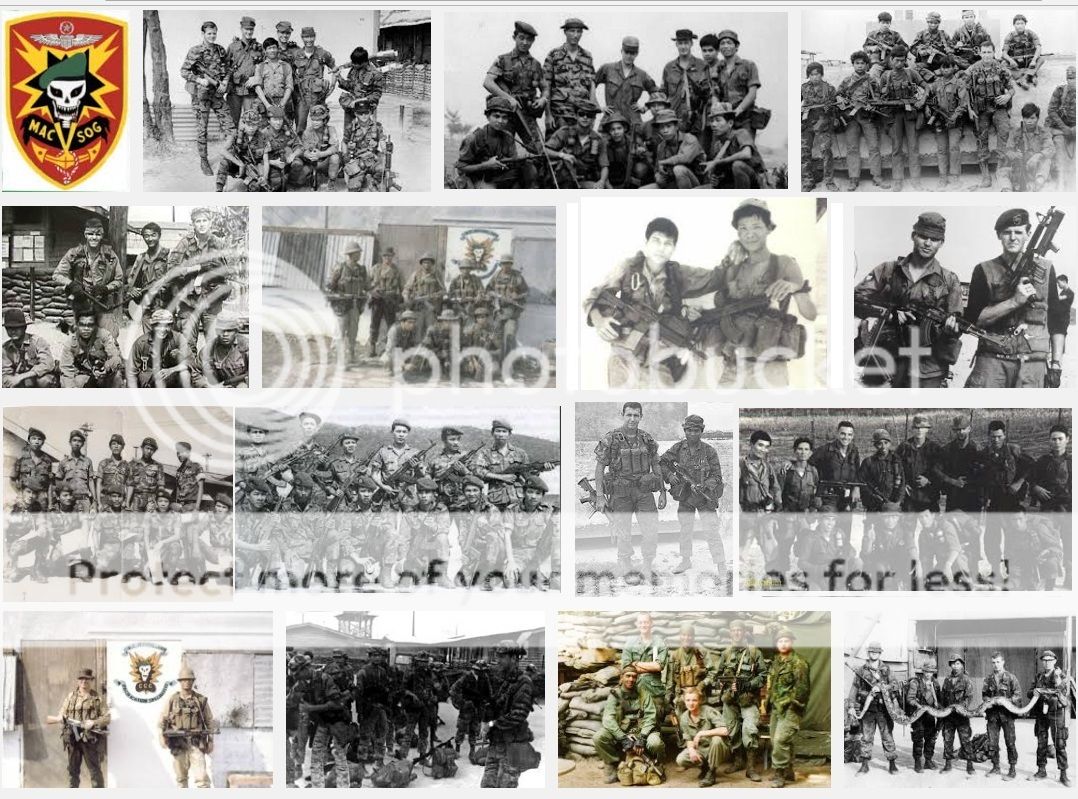
|
4

|
5
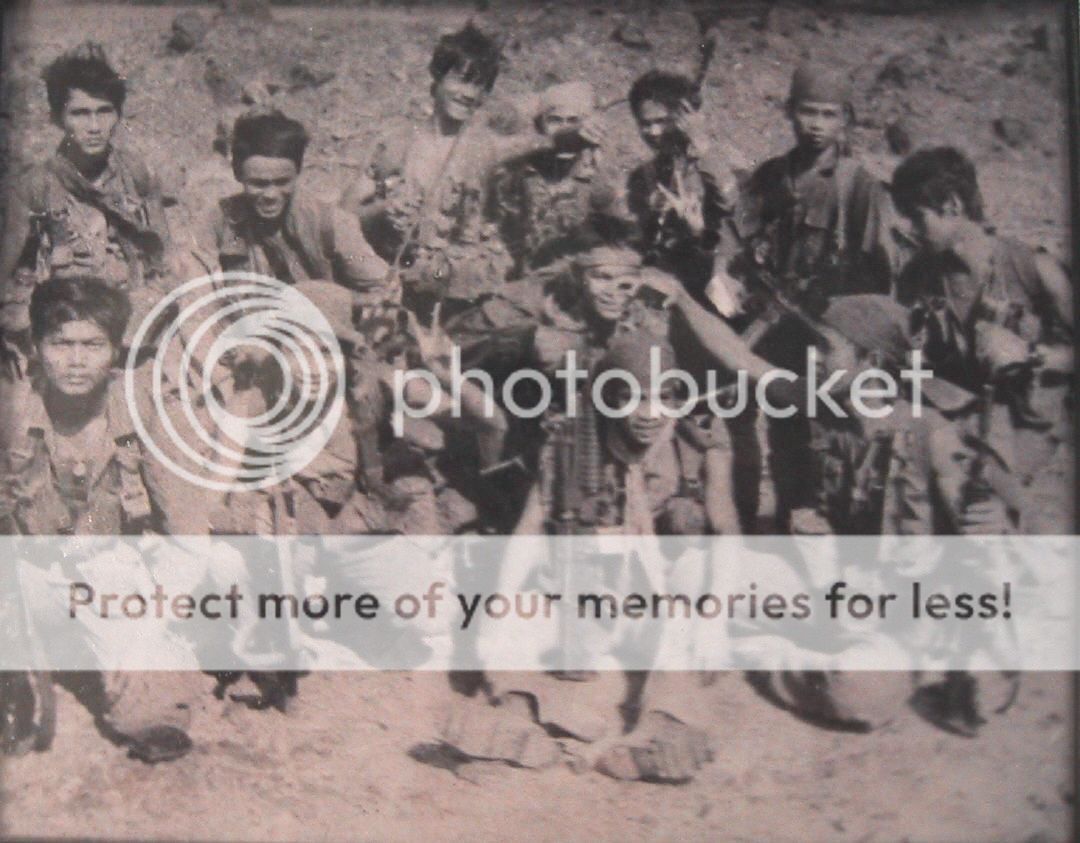
|
6
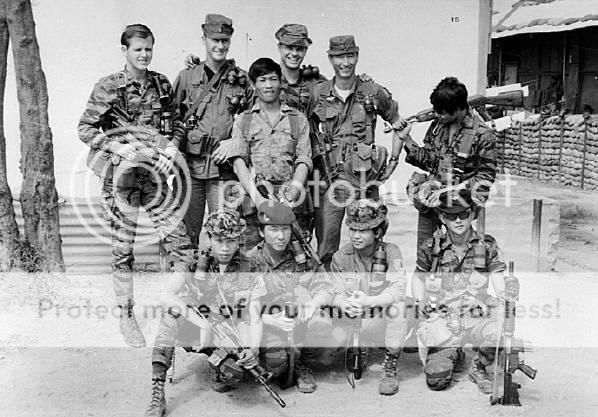
|
7
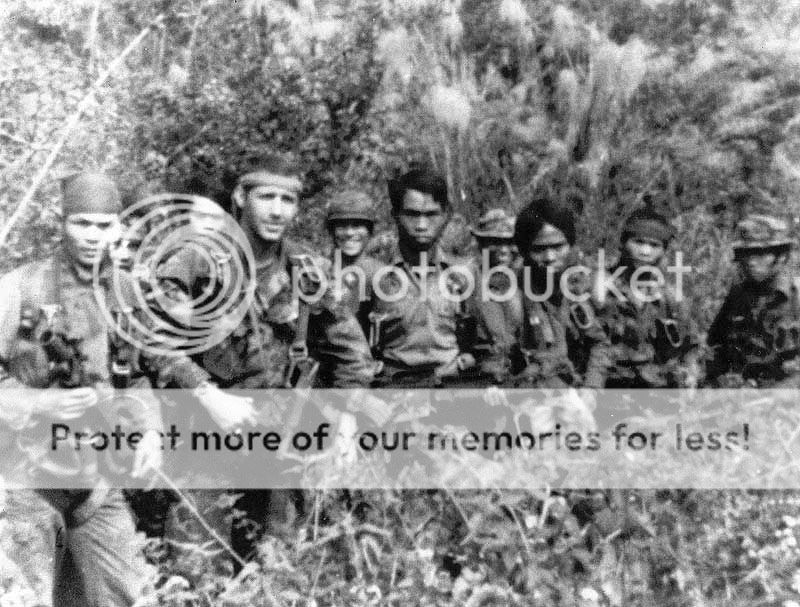
|
8
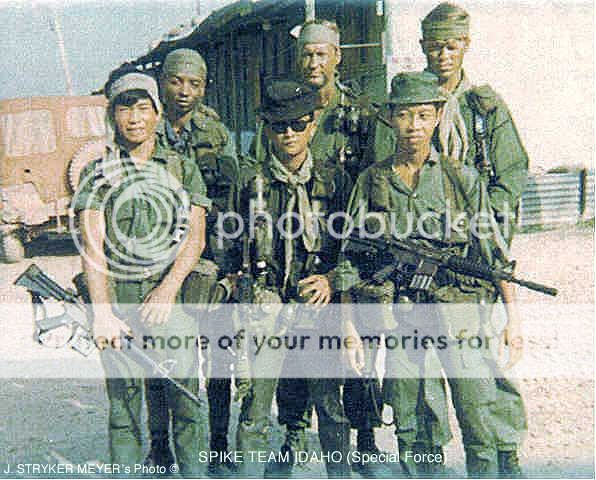
|
9
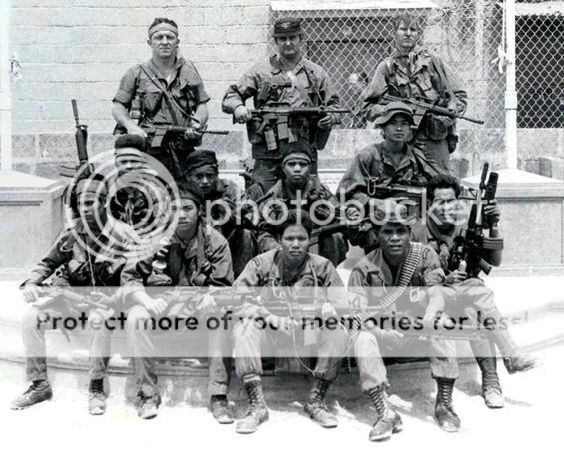
|
10
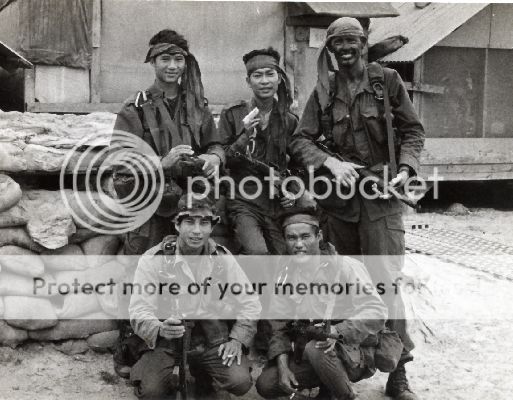
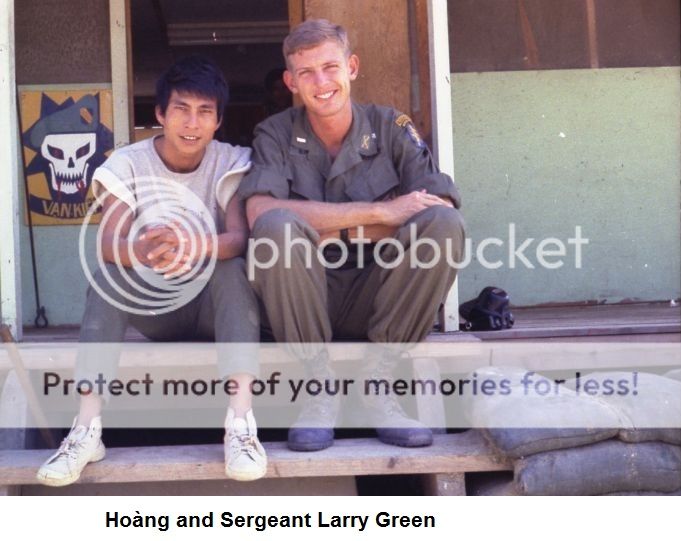

|
11
|
47 years ago on this day, northern A Shau Valley, Laos.
Heroes Under Fire: Jungle Ambush
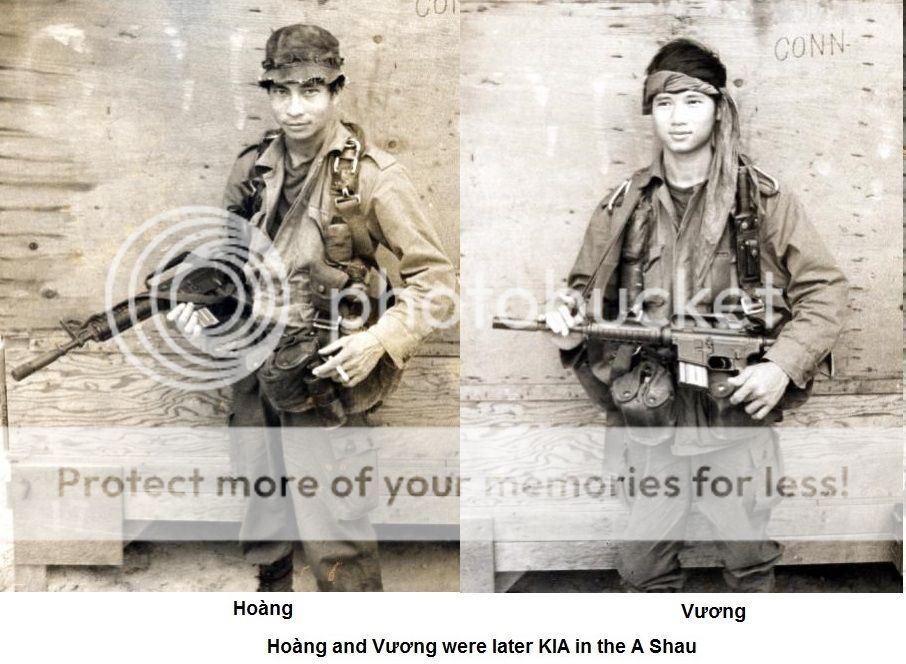
|
12
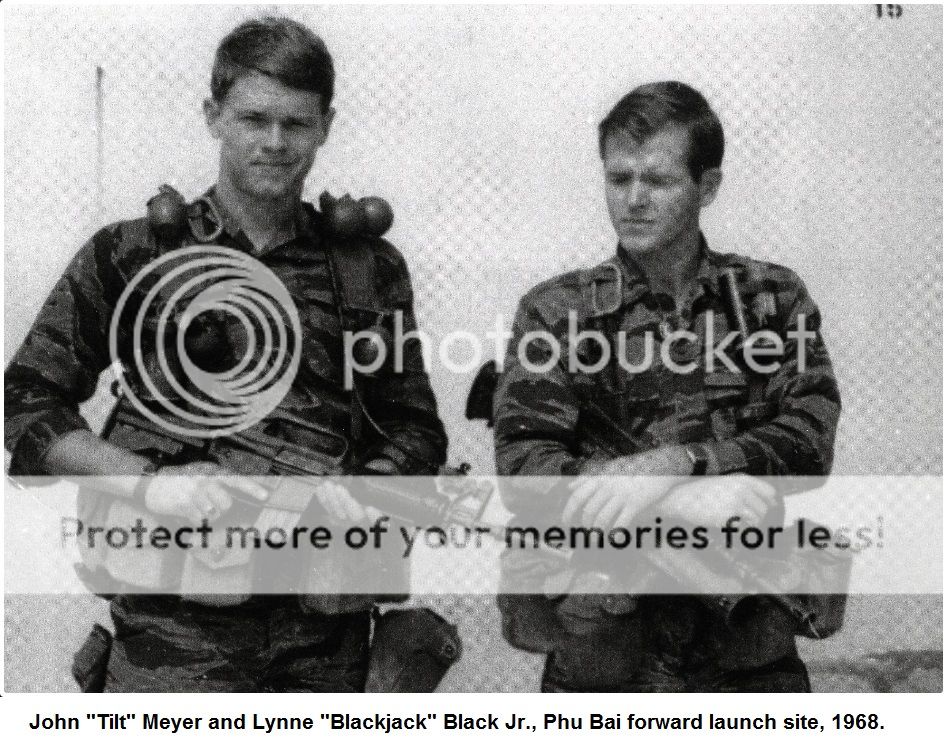
|
13
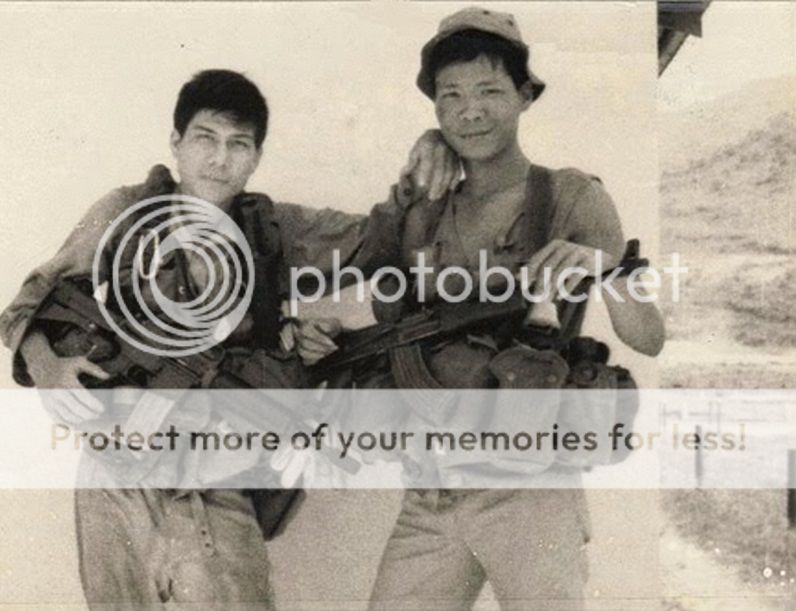
|
14

|
............................................................
KINGBEE 219TH SQUADRON
The "219th Helicopter Squadron, Vietnamese Air Force (VNAF), had twenty-five CH-34 helicopters assigned. Eight H-34 helicopters were used on a daily, average bases" to support SOG, "By the end of 1971, the average amount of helicopters used was forty-six (46) every day; averaging twenty-four for 'PHU DUNG' (Laos) and twenty-two for 'THOT NOT' (Cambodia) operations". (Note: Prairie Fire was changed to "PHU DUNG" and Salem House changed to "THOT NOT" in 1971). Harve Saal, SOG, MACV Studies and Observation Group, Behind Enemy Lines, Vol 1, pp183 and 259 respectively.
|
1 
 2
2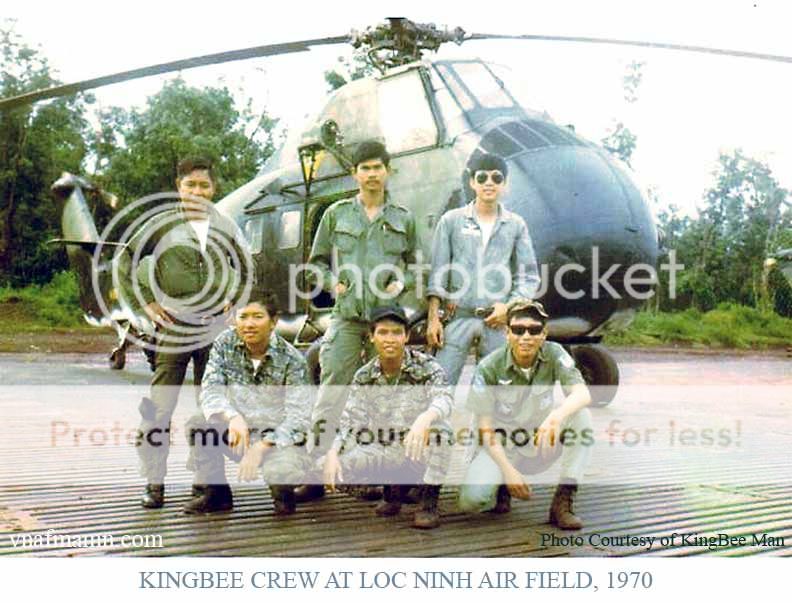
3 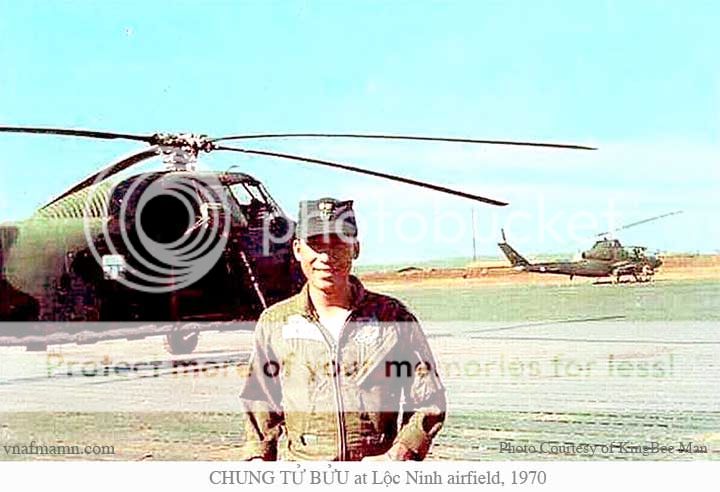
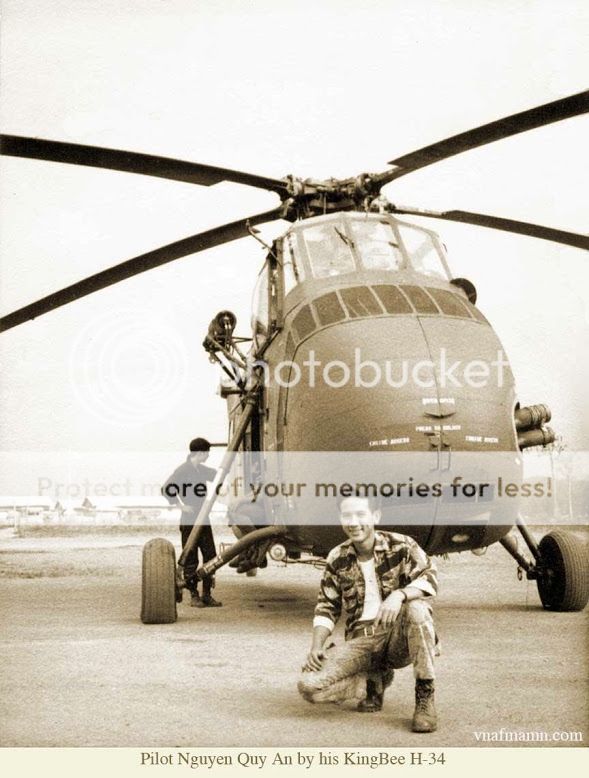
4 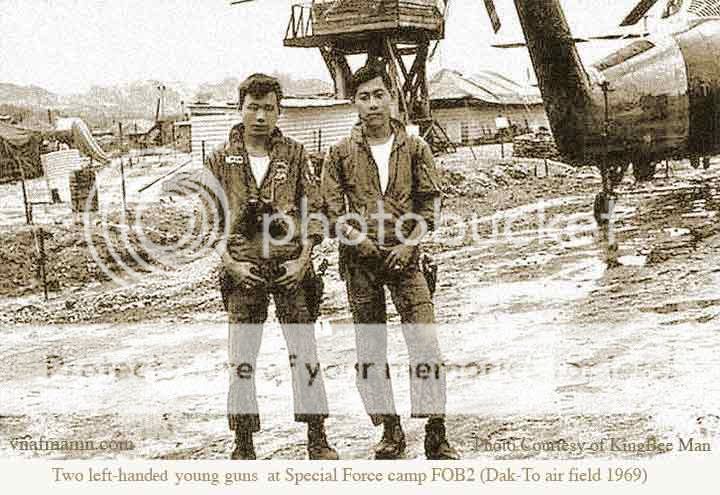
5 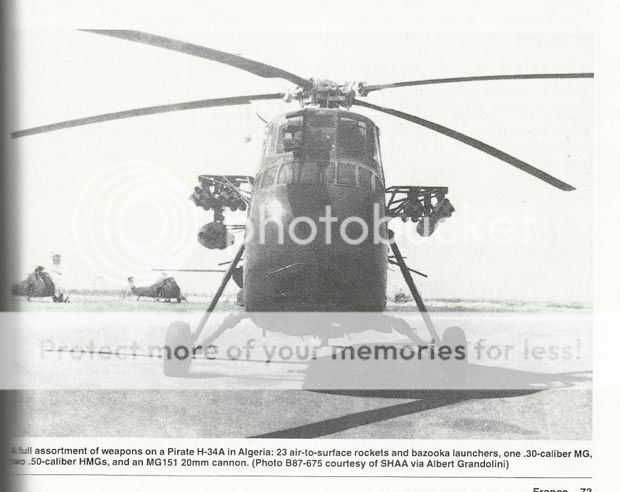
KINGBEE 219TH Pilot Đại Úy Vương Văn Ngọ - Phi Công Trực Thăng Phi Đoàn 219 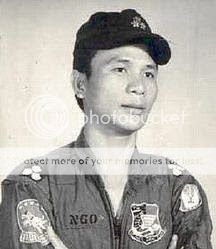
|
|
|
0000000000000000000000000

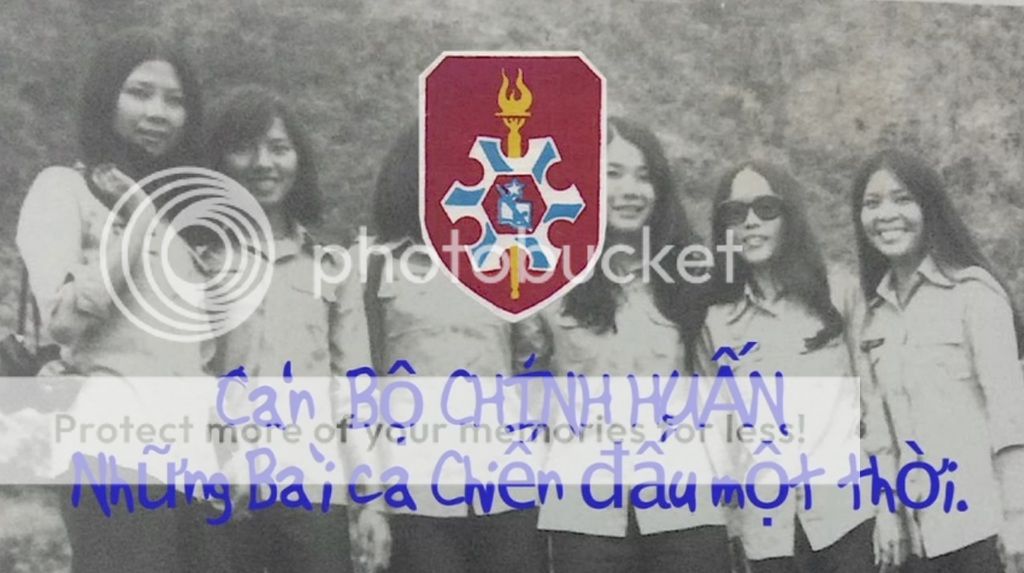
 nguyenhungtram Lôi Hổ Nha Kỹ Thuật
nguyenhungtram Lôi Hổ Nha Kỹ Thuật
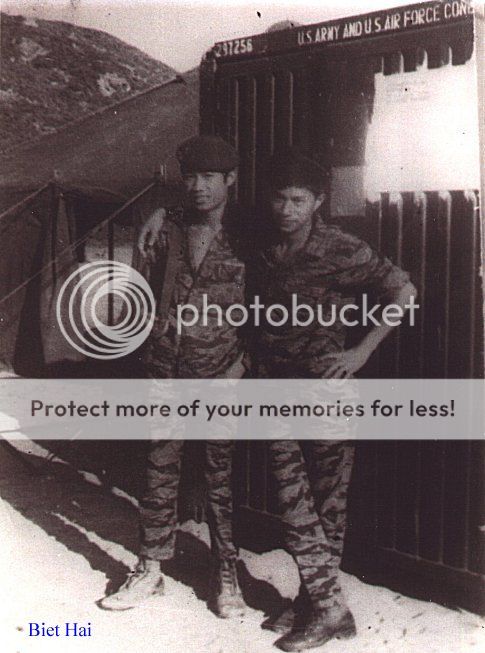
*Chân Dung Người Lính VNCH
Chân Dung Người Lính VNCH
Nha Kỹ Thuật Lôi Hổ - SOG - MACV - 81BCND
Gươm Thiêng Ái Quốc - Hồn Ma Biên Giới
|
********************
Hải kích

1- Chân Dung Người Lính 52 Biet Hai Tram Chau p1
https://youtu.be/LZqMSGHhwg4
2 - Chân Dung Người Lính 52 Biet Hai Tram Chau p2
https://youtu.be/X9SaYpx632A
3 - Chân Dung Người Lính 52 Biet Hai Tram Chau p3
https://youtu.be/cnvlK1iOQys
4 - Chân Dung Người Lính 52 Biet Hai Tram Chau p4
https://youtu.be/OOfOFdBoMy0
********************************
Nha Kỹ Thuật - một đơn vị hoạt động tình báo, chuyên thả điệp viên với những điệp vụ tối mật như xâm nhập vào miền Bắc hay các mật khu của địch ở núi rừng Trường Sơn. Họ là những thanh niên vì tinh thần quốc gia dân tộc và lý tưởng tự do nên bất chấp hiểm nguy, thâm nhập vào đất địch để thi hành công tác. Khi sa cơ, họ bị tù đày, tuổi trẻ bị chôn vùi trong ngục tù tăm tối, bệnh tật, rồi chết dần mòn một cách âm thầm không ai hay biết.

Biệt Hải

1 - Chân Dung Người Lính 51 Nguyen Tram p1
https://youtu.be/QHbMS2LXoWQ
2 - Chân Dung Người Lính 51 Nguyen Tram p2
https://youtu.be/-E8lPFV4BxA
3 - Chân Dung Người Lính 51 Nguyen Tram p3
https://youtu.be/ZgAdquDBIYs
4 - Chân Dung Người Lính 51 Nguyen Tram p4
https://youtu.be/TqoxYM8N4fo

|
Nhảy Toán Nha Kỹ Thuật - Lôi Hổ - Nhảy Toán, Họ là ai?
Cho những anh em mang CAR15, Swedish K, mìn chống chiến xa, dây bắt tù binh, đạn dược, lương khô, gạo sấy, lội bộ ngày đêm xâm nhập trên núi rừng Bắc Việt những mật khu trong Nam và đặc biệt cho những Chiến Sĩ VNCH chiến đấu anh dũng vì lý tưởng Tự Do đã vĩnh viễn nằm xuống trên quê hương thân yêu.
26

1

|
2

|
3

|
4

|
5

|
6

|
7

|
8

|
9

|
10



|
11
|
47 years ago on this day, northern A Shau Valley, Laos.
Heroes Under Fire: Jungle Ambush

|
12

|
13

|
14

|
............................................................
KINGBEE 219TH SQUADRON
The "219th Helicopter Squadron, Vietnamese Air Force (VNAF), had twenty-five CH-34 helicopters assigned. Eight H-34 helicopters were used on a daily, average bases" to support SOG, "By the end of 1971, the average amount of helicopters used was forty-six (46) every day; averaging twenty-four for 'PHU DUNG' (Laos) and twenty-two for 'THOT NOT' (Cambodia) operations". (Note: Prairie Fire was changed to "PHU DUNG" and Salem House changed to "THOT NOT" in 1971). Harve Saal, SOG, MACV Studies and Observation Group, Behind Enemy Lines, Vol 1, pp183 and 259 respectively.
|
1 
 2
2
3 

4 
5 
KINGBEE 219TH Pilot Đại Úy Vương Văn Ngọ - Phi Công Trực Thăng Phi Đoàn 219 
|
|
|
History Of Republic of Viet Nam Special Operations
NHA KY THUAT
THE STRATEGIC TECHNICAL DIRECTORATE
AND REPUBLIC OF VIETNAM SPECIAL OPERATION FORCES
In early 1956 the French built Commando School at Nha Trang was re-established with US military assistance to provide physical training and ranger instruction for up to 100 students. Early the following year President Ngo Dinh Diem ordered the creation of a special unit to conduct clandestine external operations. Initial parachute and communication training for 70 officers and sergeants was conducted at Vung Tau; 58 of these later underwent a four month commando course at Nha Trang under the auspices of a US Army Special Forces Mobile Training Team. Upon completion, they formed the Lien Doi Quang Sat so 1 (I Observation Unit) on I November 1957 at Nha Trang. The unit was put under the Presidential Liaison Office, a special intelligence bureau controlled by President Diem and outside the normal ARVN command structure. The commander was Lt. Col. Le Quang Tung, an ARVN airborne officer and Diem loyalist. Many of the Unit's members came originally from northern Vietnam, reflecting its external operations orientation.
In 1958 the Unit was renamed the Lien Doan Quang Sat so 1, or I Observation Group, reflecting its increase to nearly 400 men in December. By that time the Group was seen as an anti Communist stay behind force in the event of a North Vietnamese conventional invasion; however, because of its privileged position the Group stayed close to Diem and rarely ventured into the field.
By 1960 it was apparent that the main threat to South Vietnam was growing Viet Cong insurgency; the Group abandoned its stay behind role and was assigned missions in VC infested areas. Operations were briefly launched against VC in the Mekong Delta, and later along the Lao border.
In mid 1961 the Group had 340 men in 20 teams of 15, with plan for expansion to 805 men. In October the Group began operations into Laos to reconnoiter North Vietnamese Army logistical corridors into South Vietnam. In November the Group was renamed Lien Doan 77, or 77 Group, in honor of its USSF counterparts. Over the next two years members were regularly inserted into Laos and North Vietnam on harassment and psychological warfare operations. Longer duration agent missions, involving civilians dropped into North Vietnam, also came under the Group's auspices.
The Group's sister unit, 31 Group, began forming in February 1963. Following criticism of 77 Group's perceived role as Diem's 'palace guard', both groups were incorporated into a new command,, the Luc Luong Dac Biet (LLDB) or Special Forces, on 15 March 1963. In theory the LLDB would work closely with the USSF in raising irregular village defense units. This cosmetic change still kept the Special Forces outside of ARVN control, however, and did little to change the performance of Col. Tung's troops. In August, LLDB members attacked Buddhist pagodas across South Vietnam in an effort to stiffle Buddhist opposition to the Diem regime. At the time LLDB strength stood at seven companies, plus an additional three 'civilian' companies used by Diem on political operations. Because of such missions the LLDB became despised and, when anti Diem military units staged a coup d'etat in November, the 'revolutionary' forces arrested Col. Tung and quickly neutralized the LLDB. (Tung was later executed.)
The LLDB after President Ngo Dinh Diem
In the wake of the coup the Presidential Liaison Office was dissolved and its function assumed by the ARVN. The LLDB was put under the control of the Joint General Staff and given the mission of raising paramilitary border and village defense forces with the USSF. External operations were given to the newly formed Liaison Service, also under the JGS. The Liaison Service, commanded by a Colonel, was headquartered in Saigon adjacent to the JGS. It was divided into Task Force 1, 2 and 3, each initially composed of only a small cadre of commandos.
In 1964 the JGS also formed the Technical Service (So Ky Thuat), a covert unit tasked with longer duration agent operations into North Vietnam. Commanded by a Lieutenant Colonel, the Technical Service comprised Group 11 (Doan 11), oriented toward agent operations in Laos and eastern North Vietnam; Group 68 (Doan 68 Thang Long), another infiltration unit; and the Coastal Security Service, a maritime commando group at Da Nang attached to the Technical service with its own contingent of PT boats for seaborne infiltration.
The post Diem LLDB was restructured for its proper role as a source of counter insurgency instructors for paramilitary forces. By February 1964, 31 Group had finished training and was posted to Camp Lam Son south of Nha Trang. In May the Group became responsible for all LLDB detachments in I and 11 Corps. A second reorganization occured in September when 31 Group was renamed III Group and given responsibility for the Special Operations Training Center at Camp Lam Son. Now 77 Group, headquartered at Camp Hung Vuong in Saigon, became 301 Group. In addition, 91 Airborne Ranger Battalion, a three company fast reaction para unit, was raised under LLDB auspices in November. Total LLDB force strength stood at 333 officers, 1270 non commissioned officers and 1270 men. The LLDB command at Nha Trang was assumed by Brig. Gen. Doan Van Quang in August 1965.
By 1965 the LLDB had become almost a mirror image of the USSF. LLDB Headquarters at Nha Trang ran the nearby Special Forces Training Center at Camp Dong Ba Thin. LLDB 'C' Teams, designated A through D Company, were posted to each of South Vietnam's four Military Regions; each 'C' Team had three 'B' Teams, which controlled operational detachments at the sub regional level; 'B' Teams ran 10 to 11 'A' Teams. 'A' Teams were colocated with USSF 'A' Teams at camps concentrated along the South Vietnamese border, where they focused on training Civilian Irregular Defense Force (CIDG) personnel.
In addition, the LLDB Command directly controlled the Delta Operations Center with its Delta teams and the four company 91 Airborne Ranger Battalion, both were used by Project Delta, a special reconnaissance unit of the US Military Assistance Vietnam Studies and Observation Group (MACVSOG), which operated deep in VC/NVA sanctuaries.
On 30 January 1968 the Communists launched their TET general offensive across South Vietnam. Caught celebrating the lunar New Year, the Saigon government was initially ill prepared to counter the VC/NVA attacks. When Nha Trang was hit on the first day the LLDB Headquarters was protected by 91 Airborne Ranger Battalion, recently returned from one of its Project Delta assignments. At only 60 percent strength the Airborne Rangers turned in an excellent performance, pushing the major Communist elements out of Nha Trang in less than a day. The battle, however, cost the life of the battalion commander and wounded the four company commanders.
After a four month retraining in Nha Trang three companies from 91 Airborne Ranger Battalion were brought together with six Delta teams and renamed 81 Airborne Ranger Battalion. In early June the new battalion prepared for urban operations in Saigon after a second surge of Communist attacks pushed goverrunent forces out of the capital's northern suburbs. On 7 June the Airborne Rangers were shuttled into Saigon and began advancing toward VC held sectors around the Duc Tin Military School. After a week of bloody street fighting, much of it at night, the Airborne Rangers pushed the enemy out of the city.
Following the Tet Offensive 81 Airborne Ranger Battalion was increased to six companies, and continued to be used as the main reaction force for Project Delta; four companies were normally assigned Delta missions while two remained in reserve at LLDB Headquarters.
The Strategic Technical Directorate
In late 1968 the Technical Service was expanded into the Nha Ky thuat (Strategic Technical Directorate, or STD) in a move designed to make it more like MACVSOG, the US joint services command created in 1964 which ran reconnaissance, raids and other special operations both inside and outside South Vietnam. Despite internal opposition the Liaison Service was subordinated to the STD as its major combat arm. Like SOG, the STD also had aircraft under its nominal control, including 219 Helicopter Squadron of the Vietnamese Air Force. By the late 1960s the size of the Liaison Service had increased tremendously. Task Forces 1, 2 and 3, commanded by lieutenant colonels and larger than a brigade, were directly analogous to MACVSOG's Command and Control North, Central and South. Each Task Force was broken into a Headquarters, a Security Company, a Reconnaissance Company of ten teams, and two Mobile Launch Sites with contingents of South Vietnamese Army and paramilitary forces under temporary Liaison Service control. Although the Liaison Service was a South Vietnamese unit, all of its operations were funded, planned and controlled by MACVSOG, and recon teams integrated both MACVSOG and Liaison Service personnel.
In December 1970, in accordance with the 'Vietnamization' policy, all CIDG border camps were turned over to the South Vietnamese government and CIDG units were incorporated into the ARVN as Biet Dong Quan, or Ranger, border battalions. No longer needed as a CIDG training force, the LLDB was dissolved in the same month. Officers above captain were sent to the Biet Dong Quan; the best of the remaining officers and men were selected for a new STD unit, the Special Mission Service. At the same time 81 Airborne Ranger Battalion was expanded into 81 Airborne Ranger Group consisting of one Headquarters Company, one Recon Company and seven Exploitation Companies. The Group was put under the direct control of the JGS as a general reserve force.
During 1970 the Liaison Service had staged numerous cross border missions into Cambodia in support of major external sweeps by the US and South Vietnamese forces against Communist sanctuaries. Early the following year the Service sent three recon teams into the 'Laotian Panhandle' two weeks before the ARVN's February Lam Son 719 incursion.
In February 1971 the STD underwent major reorganization in accordance with Vietnamization and its anticipated increase in special operations responsibilities. Headquartered in Saigon, STD command was given to Col. Doan Van Nu, an ARVN airborne officer and former military attache to Taiwan. As STD commander, and a non voting member of the South Vietnamese National Security Council, Nu took orders only from President Nguyen Van Thieu and the Chief of the Armed Forces of the Republic of Vietnam JGS.
The expanded STD consisted of a headquarters, a training center, three support services and six combat services. The training center was located at Camp Yen The in Long Thanh: Yen The, significantly, was the name of a resistance movement in northern Vietnam during the 11th century. Airborne instruction was conducted at the ARVN Airborne Division's Camp Ap Don at Tan Son Nhut. The three support services were Administration & Logistics; Operations & Intelligence; and Psychological Warfare, which ran the 'Vietnam Motherland', 'Voice of Liberty', and 'Patriotic Front of the Sacred Sword' clandestine radio stations. The combat services were the Liaison Service (Loi Ho), the Special Mission Service (Hac Long), Group 11, Group 68, The Air Support Service and the Coastal Security Service.
The Liaison Service (So lien Lac), commanded by a colonel in Saigon, was composed of experienced Loi Ho recon commandos divided among Task Force I (Da Nang), Task Force 2 (Kontum) and Task Force 3 (Ban Me thuot).
The Special Mission Service (So Cong Tac), also commanded by a colonel, was headquartered at Camp Son Tra in Da Nang. It remained in training under US auspices from February 1971 until January 1972. Unlike the shorter duration raid and recon missions performed by the Liaison Service, the SMS was tasked with longer missions into North Vietnam and Laos. It was initially composed of Groups 71, 72 and 75, with the first two headquartered at separate camps at Da Nang. Group 75 was headquartered at Plei Ku in the former LLDB B Co. barracks, with one detachment at Kom Tum to provide a strike force for operations in Cambodia and inside South Vietnam.
Group 11, an airborne infiltration unit based at Da Nang, and Group 68, headquartered in Saigon with detachments at Kom Tum, was soon integrated under SMS command. Group 68 ran airborne trained rallier and agent units, including 'Earth Angels' (NVA ralliers) and 'Pike Hill' teams (Cambodian disguised as Khmer Communists). A typical Earth Angel operation took place on 15 December 1971, when a team was inserted by US aircraft on a reconnaissance mission into Mondolkiri Province, Cambodia. Pike Hill operations were focused in the same region, including a seven man POW recovery team dropped into Ba Kev, Cambodia, on 12 February 1971. Pike Hill operations even extended into Laos, e.g. the four man Pike Hill team parachuted onto the edge of the Bolovens Plateau on 28 December 1971, where it reported on enemy logistics traffic for almost two months. Pike Hill operations peaked in November 1972 when two teams were inserted by C-130 Blackbird aircraft flying at 250 feet north of Kompong Trach, Cambodia. Information from one of these teams resulted in 48 B-52 strikes within one day.
The STD's Air Support Service consisted of 219 'King Bee' Helicopter Squadron, the 114 Observation Sqn., and C-47 transportation elements. The King Bees, originally outfitted with aging H34s, were re-equipped with UH-1 Hueys in 1972. The C-47 fleet was augmented by two C-123 transports and one C-130 Blackbird in the same year. All were based at Nha Trang.
The Easter Offensive 1972
During the 1972 Easter Offensive the combat arms of the STD saw heavy action while performing recon and forward air guide operations. Meanwhile, 81 Airborne Ranger Group was tasked with reinforcing besieged An Loc. The Group was heli lifted into the southern edge of the city in April, and the Airborne Rangers walked north to form the first line of defense against the North Vietnamese. After a month of brutal fighting and heavy losses, the siege was lifted. A monument was later built by the people of An Loc in appreciation of the Group's sacrifices.
In October 1972, the SMS was given responsibility for the tactical footage between Hue and the Lao border. In early 1973 US advisors were withdrawn. The Air Support Service soon proved unable to make up for missing US logistical support, sharply reducing the number of STD external missions. STD personnel, as well as Lien Doan Nguoi Nhai SEALS, were increasingly pulled into President Thieu's Office for special assignments. Later in the year the Liaison Service's Task Force 1, 2 and 3 were redesignated Groups 1, 2 and 3; and Camp Yen The was renamed Camp Quyet Thang ('Must Win'.)
Following a brief respite in the wake of the 1973 Paris Peace Accords, the STD was back in action against encroaching NVA elements in the countryside. In September 1973 two Liaison Service Loi Ho recon teams were inserted by helicopter into Plei Djereng, a key garrison blocking the NVA infiltration corridor down the Western highlands. They were unsuccessful in rallying the defenders after an NVA attack, however. In late 1974 the NVA increased their pressure; especially hard hit was the provincial capital of Phuoc Long in Military Region 3. After several weeks of NVA tank, artillery and infantry attacks the Phuoc Long defense started to crack. In an effort to save the city the government ordered 81 Airborne Ranger Group to reinforce the southern perimeter. After two days of weather delays one company was heli lifted east of the city on the morning of 5 January 1975; and by early afternoon over 250 Airborne Rangers were in Phuoc Long. After a day of relentless NVA assaults most of the original garrison fled; contact was lost with the Airborne Rangers as the NVA began to overwhelm the city. Early the next day Aiborne Rangers stragglers were spotted north of the city. A four day search eventually retrieved some 50 percent survivors.
By March 1975 the NVA had increased pressure on the Central Highlands, prompting Saigon to begin a strategic redeployment from the western half of II Corps. Although the Liaison Service's Groups 2 and 3 provided security for the withdrawing masses the redeployment soon turned into a rout. In the hasty withdrawal Group 2 had forgotten two recon teams in Cambodia; these later walked the entire distance back to the Vietnamese coast. After the fall of the Central Highlands government forces in I Corps began to panic, sparking an exodus to the south. In the confusion Group I of the Liaison Service attempted to provide security for the sealift to Saigon. Meanwhile, the SMS boarded boats on 30 March for Vung Tau.
With the entire northern half of the country lost, Saigon attempted to regroup its forces. 81 Airborne Ranger Group, which had arrived from II Corps in a state of disarray, was refitted at Vung Tau. The Liaison Service was posted in Saigon, with Groups I and 3 reinforcing Bien Hoa and Group 2 protecting the fuel depots. The SMS also reformed in Saigon.
On 6 April 1975 SMS recon teams sent northeast and northwest of Phan Rang discovered elements of two North Vietnamese divisions massing on the city. An additional 100 SMS commandos were flown in as reinforcements, but were captured at the airport as the North Vietnamese overran Phan Rang. A second tak force of 40 Loi Ho commandos was infiltrated into Tay Ninh to attack an NVA command post; the force was intercepted and only two men escaped. By mid April 81 Airborne Ranger Group was put under the operational control of 18th Division and sent to Xuan Loc, where the unit was smashed. The remnants were pulled back to defend Saigon. By the final days of April the NVA had surrounded the capital. Along with other high officials, the STD commander escaped by plane on 27 April. On the next day 500 SMS commandos and STD HQ personnel commandeered a barge and escaped into international waters. The remainder of the Liaison Service fought until capitulation on 30 April.
REPUBLIC OF VIETNAM
NAVAL SPECIAL FORCES
In 1960 the South Vietnamese Navy proposed the creation of an Underwater Demolitions Team to improve protection of ships, piers and bridges. Later in the year a navy contingent was sent to Taiwan for UDT training; the one officer and seven men who completed the course became the cadre for a Lien Doi Nguoi Nhai (LDNN), or Frogman Unit, formally established in July 1961. The LDNN, with a proposed strength of 48 officers and men, was given the mission of salvage, obstacle removal, pier protection and special amphibious operations.
Soon after the creation of the LDNN a second unit was formed: Biet Hai, or 'Special Sea Force', paramilitary commandos under the operational control of Diem's Presidential Liaison Office and given responsibility for amphibious operations against North Vietnam. US Navy SEAL (Sea, Air and Land) commando teams began deploying to South Vietnam in February 1962 and initiated in March a six month course for the first Biet Hai cadre in airborne, reconnaissance and guerrilla warfare training. By October, 62 men had graduated from the first cycle. A planned second contingent was denied funding.
In early 1964 the LDNN, numbering only one officer and 41 men, began special operations against VC seabome infiltration attempts. Six Communist junks were destroyed by the LDNN at Ilo Ilo Island in January during Operation 'Sea Dog'. During the following month the LDNN began to be used against North Vietnamese targets as part of Operation Plan 34A, a covert action program designed to pressure the Ha Noi regime.
In February a team unsuccessfully attempted to sabotage a North Vietnamese ferry on Cape Ron and Swatow patrol craft at Quang Khe. Missions to destroy the Route I bridges below the 18th Parallel were twice aborted. In March most of the LDNN was transferred to Da Nang and colocated with the remaining Biet Hai conunandos. During May North Vietnam operations resumed by LDNN teams working with newly trained Biet Hai boat crews. On 27 May they scored their first success with the capture of a North Vietnamese junk. On 30 June a team landed on the North Vietnamese coast near a reservoir pump house. Ile team was discovered and a hand to hand fight ensued; two LDNN commandos lost their lives and three 57mm recoiless rifles were abandoned, but 22 North Vietnamese were killed and the pump house was destroyed.
In July a second class of 60 LDNN candidates was selected and began training in Nha Trang during September. Training lasted 16 weeks, and included a 'Hell Week' in which students were required to paddle a boat 115 miles, run 75 miles, carry a boat for 21 miles and swim 10 miles. During the training cycle team members salvaged a sunken landing craft at Nha Trang and a downed aircraft in Binh Duong Province. Thirty-three men completed the course in January 1965 and were based at Vung Tau under the direct control of the Vietnamese Deputy Chief of Naval Operations (Operations).
In 1965 the LDNN was given responsibility for amphibious special operations in South Vietnam. Maritime operations against North Vietnam were given exclusively to the Da Nang based Biet Hai commandos and Hai Tuan boat crews, both incorporated into the new seaborne component of the STD, the So Phong Ve Duyen Hai (Coastal Security Service or CSS). The CSS, a joint services unit, was headed by an Army lieutenant colonel until 1966, then by a Navy commander. CSS missions focused almost entirely on short duration sabotage operations lasting one night, and had a high success rate. The CSS relied heavily on special operations teams temporarily seconded from other services. Teams on loan from the Vietnamese Navy considered most effective, were codenamed 'Vega'. Other teams came from the Vietnamese Marine Corps ('Romulus') and Army ('Nimbus'). The CSS also controlled 40 civilian agents ('Cumulus') until the mid 1960s. Unofficialy, the term Biet Hai was used for all CSS forces, regardless of original service affiliation. CSS training was conducted at Da Nang under the auspices of US Navy SEAL, US Marine, and Vietnamese advisors. Further support was provided by the CSS's Da Nang based US counterpart, the Naval Advisory Detachment, a component of MACVSOG.
By the mid 1960s US Navy SEAL teams were being rotated regularly through South Vietnam on combat tours. Specialists in raids, amphibious reconnaissance and neutralization operations against the VC infrastructure, the SEALs worked closely with the LDNN and began qualifying Vietnamese personnel in basic SEAL tactics. In November 1966 a small cadre of LDNN were brought to Subic Bay in the Philippines for more intensive SEAL training.
In 1967 a third LDNN class numbering over 400 were selected for SEAL training at Vung Tau. Only 27 students finished the one year course and were kept as a separate Hai Kich ('Special Sea Unit,' the Vietnamese term for SEAL) unit within the LDNN. Shortly after their graduation the Communists launched the Tet Offensive most of the LDNN SEALs were moved to Cam Ranh Bay, where a fourth LDNN class began training during 1968. During the year the Vietnamese SEALs operated closely with the US Navy SEALS. The LDNN SEAL Team maintained its focus on operations within South Vietnam, although some missions did extend into Cambodia. Some missions used parachute infiltration.
LDNN after Tet
In 1971, in accordance with increased operational responsibilities under the Vietnamization program, the LDNN was expanded to the Lien Doan Nguoi Nhai (LDNN), or Frogman Group, comprising a SEAL Team, Underwater Demolitions Team, Explosive Ordnance Disposal Team and Boat Support Team. Headquarters remained in Saigon. For the remainder of 1971 the SEALs operated in 12 18-man detachments on neutralization operations and raids inside South Vietnam. SEAL launch sites included Ho Anh, north of Da Nang, Hue and Tinh An.
During the 1972 Easter Offensive the SEALs were transferred to Hue to conduct operations against NVA forces holding Quang Tri; after Quang Tri was retaken some of the SEALs went to Quang Ngai to resume VC neutralization operations. After US Navy SEAL advisors were withdrawn in late 1972 the LDNN SEAL Team, now 200 strong, took over training facilities at Cam Ranh Bay; training, however, was cut in half, with only one fifth given airborne training. The SEALs had been augmented by ten graduates out of 21 LDNN officer candidates sent to the US for SEAL training in 1971.
When the Vietnam ceasefire went into effect in 1973 the SEALs returned to LDNN Headquarters in Saigon. At the same time the CSS was dissolved, with the Navy contingent given the option of transferring to the LDNN.
In late December 1973 the government reiterated its territorial claim to the Paracel Island chain off its coast and dispatched a small garrison of militia to occupy the islands. By early January 1974 the Chinese, who also claimed the islands, had sent a naval task force to retake.the Paracels. On 17 January 30 LDNN SEALs were infiltrated on to the western shores of one of the major islands to confront a Chinese landing party. The Chinese had already departed; but two days later, after SEALs landed on a nearby island, Chinese forces attacked with gunboats and naval infantry. Two SEALs died and the rest were taken prisoner and later repatriated.
During the final days of South Vietnam a 50 man SEAL detachment was sent to Long An; the remainder were kept at LDNN Headquarters in Saigon along with 200 new SEAL trainees. During the early evening of 29 April all SEAL dependents boarded LDNN UDT boats and left Saigon; a few hours later the SEALs departed the capital, linked up with the UDT boats, and were picked up by the US 7th Fleet in international waters.
By Ken Conboy
THE STRATEGIC TECHNICAL DIRECTORATE
AND REPUBLIC OF VIETNAM SPECIAL OPERATION FORCES
In early 1956 the French built Commando School at Nha Trang was re-established with US military assistance to provide physical training and ranger instruction for up to 100 students. Early the following year President Ngo Dinh Diem ordered the creation of a special unit to conduct clandestine external operations. Initial parachute and communication training for 70 officers and sergeants was conducted at Vung Tau; 58 of these later underwent a four month commando course at Nha Trang under the auspices of a US Army Special Forces Mobile Training Team. Upon completion, they formed the Lien Doi Quang Sat so 1 (I Observation Unit) on I November 1957 at Nha Trang. The unit was put under the Presidential Liaison Office, a special intelligence bureau controlled by President Diem and outside the normal ARVN command structure. The commander was Lt. Col. Le Quang Tung, an ARVN airborne officer and Diem loyalist. Many of the Unit's members came originally from northern Vietnam, reflecting its external operations orientation.
In 1958 the Unit was renamed the Lien Doan Quang Sat so 1, or I Observation Group, reflecting its increase to nearly 400 men in December. By that time the Group was seen as an anti Communist stay behind force in the event of a North Vietnamese conventional invasion; however, because of its privileged position the Group stayed close to Diem and rarely ventured into the field.
By 1960 it was apparent that the main threat to South Vietnam was growing Viet Cong insurgency; the Group abandoned its stay behind role and was assigned missions in VC infested areas. Operations were briefly launched against VC in the Mekong Delta, and later along the Lao border.
In mid 1961 the Group had 340 men in 20 teams of 15, with plan for expansion to 805 men. In October the Group began operations into Laos to reconnoiter North Vietnamese Army logistical corridors into South Vietnam. In November the Group was renamed Lien Doan 77, or 77 Group, in honor of its USSF counterparts. Over the next two years members were regularly inserted into Laos and North Vietnam on harassment and psychological warfare operations. Longer duration agent missions, involving civilians dropped into North Vietnam, also came under the Group's auspices.
The Group's sister unit, 31 Group, began forming in February 1963. Following criticism of 77 Group's perceived role as Diem's 'palace guard', both groups were incorporated into a new command,, the Luc Luong Dac Biet (LLDB) or Special Forces, on 15 March 1963. In theory the LLDB would work closely with the USSF in raising irregular village defense units. This cosmetic change still kept the Special Forces outside of ARVN control, however, and did little to change the performance of Col. Tung's troops. In August, LLDB members attacked Buddhist pagodas across South Vietnam in an effort to stiffle Buddhist opposition to the Diem regime. At the time LLDB strength stood at seven companies, plus an additional three 'civilian' companies used by Diem on political operations. Because of such missions the LLDB became despised and, when anti Diem military units staged a coup d'etat in November, the 'revolutionary' forces arrested Col. Tung and quickly neutralized the LLDB. (Tung was later executed.)
The LLDB after President Ngo Dinh Diem
In the wake of the coup the Presidential Liaison Office was dissolved and its function assumed by the ARVN. The LLDB was put under the control of the Joint General Staff and given the mission of raising paramilitary border and village defense forces with the USSF. External operations were given to the newly formed Liaison Service, also under the JGS. The Liaison Service, commanded by a Colonel, was headquartered in Saigon adjacent to the JGS. It was divided into Task Force 1, 2 and 3, each initially composed of only a small cadre of commandos.
In 1964 the JGS also formed the Technical Service (So Ky Thuat), a covert unit tasked with longer duration agent operations into North Vietnam. Commanded by a Lieutenant Colonel, the Technical Service comprised Group 11 (Doan 11), oriented toward agent operations in Laos and eastern North Vietnam; Group 68 (Doan 68 Thang Long), another infiltration unit; and the Coastal Security Service, a maritime commando group at Da Nang attached to the Technical service with its own contingent of PT boats for seaborne infiltration.
The post Diem LLDB was restructured for its proper role as a source of counter insurgency instructors for paramilitary forces. By February 1964, 31 Group had finished training and was posted to Camp Lam Son south of Nha Trang. In May the Group became responsible for all LLDB detachments in I and 11 Corps. A second reorganization occured in September when 31 Group was renamed III Group and given responsibility for the Special Operations Training Center at Camp Lam Son. Now 77 Group, headquartered at Camp Hung Vuong in Saigon, became 301 Group. In addition, 91 Airborne Ranger Battalion, a three company fast reaction para unit, was raised under LLDB auspices in November. Total LLDB force strength stood at 333 officers, 1270 non commissioned officers and 1270 men. The LLDB command at Nha Trang was assumed by Brig. Gen. Doan Van Quang in August 1965.
By 1965 the LLDB had become almost a mirror image of the USSF. LLDB Headquarters at Nha Trang ran the nearby Special Forces Training Center at Camp Dong Ba Thin. LLDB 'C' Teams, designated A through D Company, were posted to each of South Vietnam's four Military Regions; each 'C' Team had three 'B' Teams, which controlled operational detachments at the sub regional level; 'B' Teams ran 10 to 11 'A' Teams. 'A' Teams were colocated with USSF 'A' Teams at camps concentrated along the South Vietnamese border, where they focused on training Civilian Irregular Defense Force (CIDG) personnel.
In addition, the LLDB Command directly controlled the Delta Operations Center with its Delta teams and the four company 91 Airborne Ranger Battalion, both were used by Project Delta, a special reconnaissance unit of the US Military Assistance Vietnam Studies and Observation Group (MACVSOG), which operated deep in VC/NVA sanctuaries.
On 30 January 1968 the Communists launched their TET general offensive across South Vietnam. Caught celebrating the lunar New Year, the Saigon government was initially ill prepared to counter the VC/NVA attacks. When Nha Trang was hit on the first day the LLDB Headquarters was protected by 91 Airborne Ranger Battalion, recently returned from one of its Project Delta assignments. At only 60 percent strength the Airborne Rangers turned in an excellent performance, pushing the major Communist elements out of Nha Trang in less than a day. The battle, however, cost the life of the battalion commander and wounded the four company commanders.
After a four month retraining in Nha Trang three companies from 91 Airborne Ranger Battalion were brought together with six Delta teams and renamed 81 Airborne Ranger Battalion. In early June the new battalion prepared for urban operations in Saigon after a second surge of Communist attacks pushed goverrunent forces out of the capital's northern suburbs. On 7 June the Airborne Rangers were shuttled into Saigon and began advancing toward VC held sectors around the Duc Tin Military School. After a week of bloody street fighting, much of it at night, the Airborne Rangers pushed the enemy out of the city.
Following the Tet Offensive 81 Airborne Ranger Battalion was increased to six companies, and continued to be used as the main reaction force for Project Delta; four companies were normally assigned Delta missions while two remained in reserve at LLDB Headquarters.
The Strategic Technical Directorate
In late 1968 the Technical Service was expanded into the Nha Ky thuat (Strategic Technical Directorate, or STD) in a move designed to make it more like MACVSOG, the US joint services command created in 1964 which ran reconnaissance, raids and other special operations both inside and outside South Vietnam. Despite internal opposition the Liaison Service was subordinated to the STD as its major combat arm. Like SOG, the STD also had aircraft under its nominal control, including 219 Helicopter Squadron of the Vietnamese Air Force. By the late 1960s the size of the Liaison Service had increased tremendously. Task Forces 1, 2 and 3, commanded by lieutenant colonels and larger than a brigade, were directly analogous to MACVSOG's Command and Control North, Central and South. Each Task Force was broken into a Headquarters, a Security Company, a Reconnaissance Company of ten teams, and two Mobile Launch Sites with contingents of South Vietnamese Army and paramilitary forces under temporary Liaison Service control. Although the Liaison Service was a South Vietnamese unit, all of its operations were funded, planned and controlled by MACVSOG, and recon teams integrated both MACVSOG and Liaison Service personnel.
In December 1970, in accordance with the 'Vietnamization' policy, all CIDG border camps were turned over to the South Vietnamese government and CIDG units were incorporated into the ARVN as Biet Dong Quan, or Ranger, border battalions. No longer needed as a CIDG training force, the LLDB was dissolved in the same month. Officers above captain were sent to the Biet Dong Quan; the best of the remaining officers and men were selected for a new STD unit, the Special Mission Service. At the same time 81 Airborne Ranger Battalion was expanded into 81 Airborne Ranger Group consisting of one Headquarters Company, one Recon Company and seven Exploitation Companies. The Group was put under the direct control of the JGS as a general reserve force.
During 1970 the Liaison Service had staged numerous cross border missions into Cambodia in support of major external sweeps by the US and South Vietnamese forces against Communist sanctuaries. Early the following year the Service sent three recon teams into the 'Laotian Panhandle' two weeks before the ARVN's February Lam Son 719 incursion.
In February 1971 the STD underwent major reorganization in accordance with Vietnamization and its anticipated increase in special operations responsibilities. Headquartered in Saigon, STD command was given to Col. Doan Van Nu, an ARVN airborne officer and former military attache to Taiwan. As STD commander, and a non voting member of the South Vietnamese National Security Council, Nu took orders only from President Nguyen Van Thieu and the Chief of the Armed Forces of the Republic of Vietnam JGS.
The expanded STD consisted of a headquarters, a training center, three support services and six combat services. The training center was located at Camp Yen The in Long Thanh: Yen The, significantly, was the name of a resistance movement in northern Vietnam during the 11th century. Airborne instruction was conducted at the ARVN Airborne Division's Camp Ap Don at Tan Son Nhut. The three support services were Administration & Logistics; Operations & Intelligence; and Psychological Warfare, which ran the 'Vietnam Motherland', 'Voice of Liberty', and 'Patriotic Front of the Sacred Sword' clandestine radio stations. The combat services were the Liaison Service (Loi Ho), the Special Mission Service (Hac Long), Group 11, Group 68, The Air Support Service and the Coastal Security Service.
The Liaison Service (So lien Lac), commanded by a colonel in Saigon, was composed of experienced Loi Ho recon commandos divided among Task Force I (Da Nang), Task Force 2 (Kontum) and Task Force 3 (Ban Me thuot).
The Special Mission Service (So Cong Tac), also commanded by a colonel, was headquartered at Camp Son Tra in Da Nang. It remained in training under US auspices from February 1971 until January 1972. Unlike the shorter duration raid and recon missions performed by the Liaison Service, the SMS was tasked with longer missions into North Vietnam and Laos. It was initially composed of Groups 71, 72 and 75, with the first two headquartered at separate camps at Da Nang. Group 75 was headquartered at Plei Ku in the former LLDB B Co. barracks, with one detachment at Kom Tum to provide a strike force for operations in Cambodia and inside South Vietnam.
Group 11, an airborne infiltration unit based at Da Nang, and Group 68, headquartered in Saigon with detachments at Kom Tum, was soon integrated under SMS command. Group 68 ran airborne trained rallier and agent units, including 'Earth Angels' (NVA ralliers) and 'Pike Hill' teams (Cambodian disguised as Khmer Communists). A typical Earth Angel operation took place on 15 December 1971, when a team was inserted by US aircraft on a reconnaissance mission into Mondolkiri Province, Cambodia. Pike Hill operations were focused in the same region, including a seven man POW recovery team dropped into Ba Kev, Cambodia, on 12 February 1971. Pike Hill operations even extended into Laos, e.g. the four man Pike Hill team parachuted onto the edge of the Bolovens Plateau on 28 December 1971, where it reported on enemy logistics traffic for almost two months. Pike Hill operations peaked in November 1972 when two teams were inserted by C-130 Blackbird aircraft flying at 250 feet north of Kompong Trach, Cambodia. Information from one of these teams resulted in 48 B-52 strikes within one day.
The STD's Air Support Service consisted of 219 'King Bee' Helicopter Squadron, the 114 Observation Sqn., and C-47 transportation elements. The King Bees, originally outfitted with aging H34s, were re-equipped with UH-1 Hueys in 1972. The C-47 fleet was augmented by two C-123 transports and one C-130 Blackbird in the same year. All were based at Nha Trang.
The Easter Offensive 1972
During the 1972 Easter Offensive the combat arms of the STD saw heavy action while performing recon and forward air guide operations. Meanwhile, 81 Airborne Ranger Group was tasked with reinforcing besieged An Loc. The Group was heli lifted into the southern edge of the city in April, and the Airborne Rangers walked north to form the first line of defense against the North Vietnamese. After a month of brutal fighting and heavy losses, the siege was lifted. A monument was later built by the people of An Loc in appreciation of the Group's sacrifices.
In October 1972, the SMS was given responsibility for the tactical footage between Hue and the Lao border. In early 1973 US advisors were withdrawn. The Air Support Service soon proved unable to make up for missing US logistical support, sharply reducing the number of STD external missions. STD personnel, as well as Lien Doan Nguoi Nhai SEALS, were increasingly pulled into President Thieu's Office for special assignments. Later in the year the Liaison Service's Task Force 1, 2 and 3 were redesignated Groups 1, 2 and 3; and Camp Yen The was renamed Camp Quyet Thang ('Must Win'.)
Following a brief respite in the wake of the 1973 Paris Peace Accords, the STD was back in action against encroaching NVA elements in the countryside. In September 1973 two Liaison Service Loi Ho recon teams were inserted by helicopter into Plei Djereng, a key garrison blocking the NVA infiltration corridor down the Western highlands. They were unsuccessful in rallying the defenders after an NVA attack, however. In late 1974 the NVA increased their pressure; especially hard hit was the provincial capital of Phuoc Long in Military Region 3. After several weeks of NVA tank, artillery and infantry attacks the Phuoc Long defense started to crack. In an effort to save the city the government ordered 81 Airborne Ranger Group to reinforce the southern perimeter. After two days of weather delays one company was heli lifted east of the city on the morning of 5 January 1975; and by early afternoon over 250 Airborne Rangers were in Phuoc Long. After a day of relentless NVA assaults most of the original garrison fled; contact was lost with the Airborne Rangers as the NVA began to overwhelm the city. Early the next day Aiborne Rangers stragglers were spotted north of the city. A four day search eventually retrieved some 50 percent survivors.
By March 1975 the NVA had increased pressure on the Central Highlands, prompting Saigon to begin a strategic redeployment from the western half of II Corps. Although the Liaison Service's Groups 2 and 3 provided security for the withdrawing masses the redeployment soon turned into a rout. In the hasty withdrawal Group 2 had forgotten two recon teams in Cambodia; these later walked the entire distance back to the Vietnamese coast. After the fall of the Central Highlands government forces in I Corps began to panic, sparking an exodus to the south. In the confusion Group I of the Liaison Service attempted to provide security for the sealift to Saigon. Meanwhile, the SMS boarded boats on 30 March for Vung Tau.
With the entire northern half of the country lost, Saigon attempted to regroup its forces. 81 Airborne Ranger Group, which had arrived from II Corps in a state of disarray, was refitted at Vung Tau. The Liaison Service was posted in Saigon, with Groups I and 3 reinforcing Bien Hoa and Group 2 protecting the fuel depots. The SMS also reformed in Saigon.
On 6 April 1975 SMS recon teams sent northeast and northwest of Phan Rang discovered elements of two North Vietnamese divisions massing on the city. An additional 100 SMS commandos were flown in as reinforcements, but were captured at the airport as the North Vietnamese overran Phan Rang. A second tak force of 40 Loi Ho commandos was infiltrated into Tay Ninh to attack an NVA command post; the force was intercepted and only two men escaped. By mid April 81 Airborne Ranger Group was put under the operational control of 18th Division and sent to Xuan Loc, where the unit was smashed. The remnants were pulled back to defend Saigon. By the final days of April the NVA had surrounded the capital. Along with other high officials, the STD commander escaped by plane on 27 April. On the next day 500 SMS commandos and STD HQ personnel commandeered a barge and escaped into international waters. The remainder of the Liaison Service fought until capitulation on 30 April.
REPUBLIC OF VIETNAM
NAVAL SPECIAL FORCES
In 1960 the South Vietnamese Navy proposed the creation of an Underwater Demolitions Team to improve protection of ships, piers and bridges. Later in the year a navy contingent was sent to Taiwan for UDT training; the one officer and seven men who completed the course became the cadre for a Lien Doi Nguoi Nhai (LDNN), or Frogman Unit, formally established in July 1961. The LDNN, with a proposed strength of 48 officers and men, was given the mission of salvage, obstacle removal, pier protection and special amphibious operations.
Soon after the creation of the LDNN a second unit was formed: Biet Hai, or 'Special Sea Force', paramilitary commandos under the operational control of Diem's Presidential Liaison Office and given responsibility for amphibious operations against North Vietnam. US Navy SEAL (Sea, Air and Land) commando teams began deploying to South Vietnam in February 1962 and initiated in March a six month course for the first Biet Hai cadre in airborne, reconnaissance and guerrilla warfare training. By October, 62 men had graduated from the first cycle. A planned second contingent was denied funding.
In early 1964 the LDNN, numbering only one officer and 41 men, began special operations against VC seabome infiltration attempts. Six Communist junks were destroyed by the LDNN at Ilo Ilo Island in January during Operation 'Sea Dog'. During the following month the LDNN began to be used against North Vietnamese targets as part of Operation Plan 34A, a covert action program designed to pressure the Ha Noi regime.
In February a team unsuccessfully attempted to sabotage a North Vietnamese ferry on Cape Ron and Swatow patrol craft at Quang Khe. Missions to destroy the Route I bridges below the 18th Parallel were twice aborted. In March most of the LDNN was transferred to Da Nang and colocated with the remaining Biet Hai conunandos. During May North Vietnam operations resumed by LDNN teams working with newly trained Biet Hai boat crews. On 27 May they scored their first success with the capture of a North Vietnamese junk. On 30 June a team landed on the North Vietnamese coast near a reservoir pump house. Ile team was discovered and a hand to hand fight ensued; two LDNN commandos lost their lives and three 57mm recoiless rifles were abandoned, but 22 North Vietnamese were killed and the pump house was destroyed.
In July a second class of 60 LDNN candidates was selected and began training in Nha Trang during September. Training lasted 16 weeks, and included a 'Hell Week' in which students were required to paddle a boat 115 miles, run 75 miles, carry a boat for 21 miles and swim 10 miles. During the training cycle team members salvaged a sunken landing craft at Nha Trang and a downed aircraft in Binh Duong Province. Thirty-three men completed the course in January 1965 and were based at Vung Tau under the direct control of the Vietnamese Deputy Chief of Naval Operations (Operations).
In 1965 the LDNN was given responsibility for amphibious special operations in South Vietnam. Maritime operations against North Vietnam were given exclusively to the Da Nang based Biet Hai commandos and Hai Tuan boat crews, both incorporated into the new seaborne component of the STD, the So Phong Ve Duyen Hai (Coastal Security Service or CSS). The CSS, a joint services unit, was headed by an Army lieutenant colonel until 1966, then by a Navy commander. CSS missions focused almost entirely on short duration sabotage operations lasting one night, and had a high success rate. The CSS relied heavily on special operations teams temporarily seconded from other services. Teams on loan from the Vietnamese Navy considered most effective, were codenamed 'Vega'. Other teams came from the Vietnamese Marine Corps ('Romulus') and Army ('Nimbus'). The CSS also controlled 40 civilian agents ('Cumulus') until the mid 1960s. Unofficialy, the term Biet Hai was used for all CSS forces, regardless of original service affiliation. CSS training was conducted at Da Nang under the auspices of US Navy SEAL, US Marine, and Vietnamese advisors. Further support was provided by the CSS's Da Nang based US counterpart, the Naval Advisory Detachment, a component of MACVSOG.
By the mid 1960s US Navy SEAL teams were being rotated regularly through South Vietnam on combat tours. Specialists in raids, amphibious reconnaissance and neutralization operations against the VC infrastructure, the SEALs worked closely with the LDNN and began qualifying Vietnamese personnel in basic SEAL tactics. In November 1966 a small cadre of LDNN were brought to Subic Bay in the Philippines for more intensive SEAL training.
In 1967 a third LDNN class numbering over 400 were selected for SEAL training at Vung Tau. Only 27 students finished the one year course and were kept as a separate Hai Kich ('Special Sea Unit,' the Vietnamese term for SEAL) unit within the LDNN. Shortly after their graduation the Communists launched the Tet Offensive most of the LDNN SEALs were moved to Cam Ranh Bay, where a fourth LDNN class began training during 1968. During the year the Vietnamese SEALs operated closely with the US Navy SEALS. The LDNN SEAL Team maintained its focus on operations within South Vietnam, although some missions did extend into Cambodia. Some missions used parachute infiltration.
LDNN after Tet
In 1971, in accordance with increased operational responsibilities under the Vietnamization program, the LDNN was expanded to the Lien Doan Nguoi Nhai (LDNN), or Frogman Group, comprising a SEAL Team, Underwater Demolitions Team, Explosive Ordnance Disposal Team and Boat Support Team. Headquarters remained in Saigon. For the remainder of 1971 the SEALs operated in 12 18-man detachments on neutralization operations and raids inside South Vietnam. SEAL launch sites included Ho Anh, north of Da Nang, Hue and Tinh An.
During the 1972 Easter Offensive the SEALs were transferred to Hue to conduct operations against NVA forces holding Quang Tri; after Quang Tri was retaken some of the SEALs went to Quang Ngai to resume VC neutralization operations. After US Navy SEAL advisors were withdrawn in late 1972 the LDNN SEAL Team, now 200 strong, took over training facilities at Cam Ranh Bay; training, however, was cut in half, with only one fifth given airborne training. The SEALs had been augmented by ten graduates out of 21 LDNN officer candidates sent to the US for SEAL training in 1971.
When the Vietnam ceasefire went into effect in 1973 the SEALs returned to LDNN Headquarters in Saigon. At the same time the CSS was dissolved, with the Navy contingent given the option of transferring to the LDNN.
In late December 1973 the government reiterated its territorial claim to the Paracel Island chain off its coast and dispatched a small garrison of militia to occupy the islands. By early January 1974 the Chinese, who also claimed the islands, had sent a naval task force to retake.the Paracels. On 17 January 30 LDNN SEALs were infiltrated on to the western shores of one of the major islands to confront a Chinese landing party. The Chinese had already departed; but two days later, after SEALs landed on a nearby island, Chinese forces attacked with gunboats and naval infantry. Two SEALs died and the rest were taken prisoner and later repatriated.
During the final days of South Vietnam a 50 man SEAL detachment was sent to Long An; the remainder were kept at LDNN Headquarters in Saigon along with 200 new SEAL trainees. During the early evening of 29 April all SEAL dependents boarded LDNN UDT boats and left Saigon; a few hours later the SEALs departed the capital, linked up with the UDT boats, and were picked up by the US 7th Fleet in international waters.
By Ken Conboy
http://loiho.blogspot.com/2007/09/history-of-republic-of-viet-nam-special.html
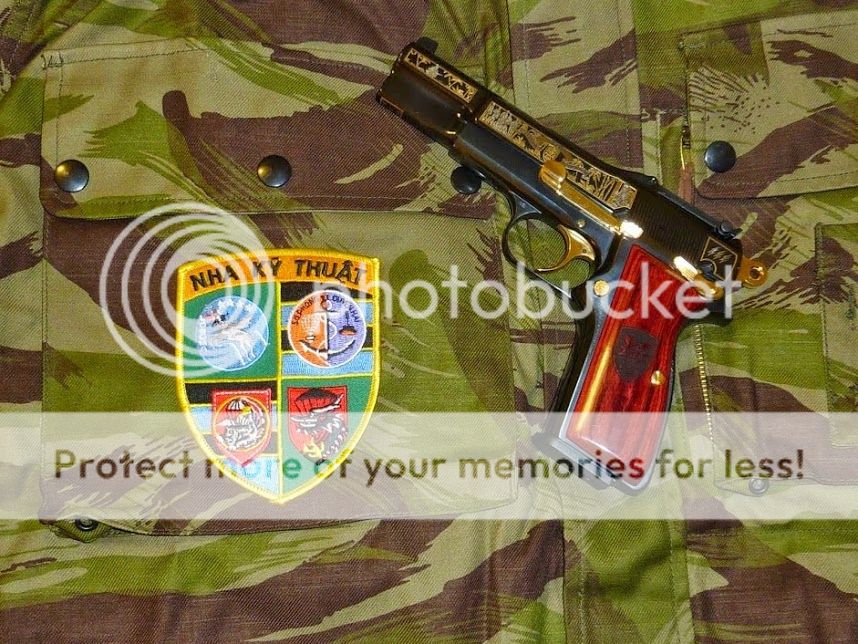

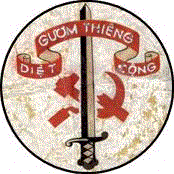
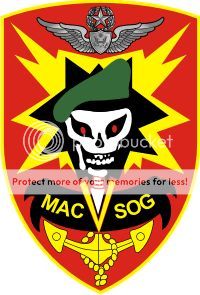
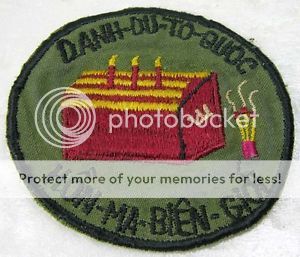
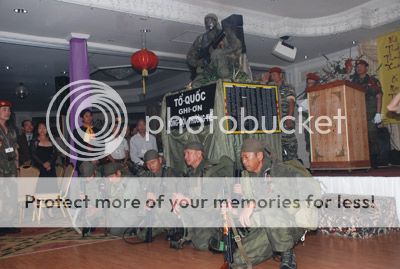 Trong huyết thống Con Rồng Cháu Tiên, với truyền thống di hướng để phát triển và dành giựt sự tốt đẹp cho giống nòi. Đó đã hình thành nơi Dân Tộc một tinh thần bất khuất, ý chí kiên cường. Một đất nước địa linh đã xuất hiện nhiều nhân kiệt trải dài bề dầy lịch sử bốn ngàn năm văn hiến, nên cho dù qua hai thời kỳ Bắc Thuộc nhưng Bắc Phương vẫn không đồng hóa được dân Việt. Đó là nhờ khí thiêng sông núi!
Trong huyết thống Con Rồng Cháu Tiên, với truyền thống di hướng để phát triển và dành giựt sự tốt đẹp cho giống nòi. Đó đã hình thành nơi Dân Tộc một tinh thần bất khuất, ý chí kiên cường. Một đất nước địa linh đã xuất hiện nhiều nhân kiệt trải dài bề dầy lịch sử bốn ngàn năm văn hiến, nên cho dù qua hai thời kỳ Bắc Thuộc nhưng Bắc Phương vẫn không đồng hóa được dân Việt. Đó là nhờ khí thiêng sông núi!
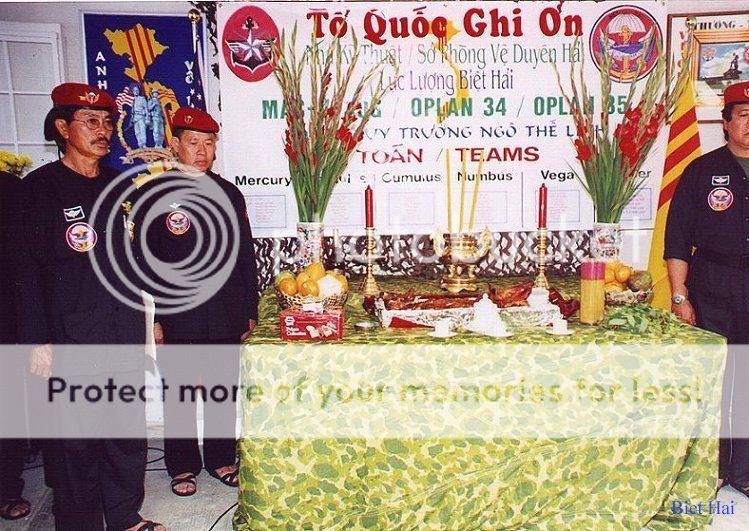 Từ xa xưa, xã hội chúng ta là hình thành một nền tảng luôn ảnh hưởng tinh thần thiêng liêng từ cha ông; Ảnh hưởng từ những truyền thuyết lịch sử gây phấn chấn sự suy nghĩ, tạo khí phách dũng cảm cho dòng giống Lạc Việt để đi đến chiến thắng vẻ vang và lẫy lừng trước quân thù.
Từ xa xưa, xã hội chúng ta là hình thành một nền tảng luôn ảnh hưởng tinh thần thiêng liêng từ cha ông; Ảnh hưởng từ những truyền thuyết lịch sử gây phấn chấn sự suy nghĩ, tạo khí phách dũng cảm cho dòng giống Lạc Việt để đi đến chiến thắng vẻ vang và lẫy lừng trước quân thù.
 Đó là sơ qua vài điểm huấn luyện để trở thành một nhân viên công tác. Điều quan trọng cốt yếu nhất là tinh thần. Nào ai hiểu được tâm trạng của những chiến sĩ can trường này ra sao? Khi bản thân họ nhẩy ra khỏi cửa máy bay trên không phận Bắc Việt giữa đêm tối, hay rời tốc đỉnh bơi ngầm dưới nước biển lạnh lẽo vào bờ bằng ống hơi.
Sau đó họ chiến đấu đơn độc, không hậu phương hỗ trợ. Cái lạnh lẽo của rừng núi, dăm ba người dựa lưng vào nhau đó là thành trì. Lỡ ho một tiếng có thể mất mạng, sai hướng đi là tự sát. Cẩn thận e dè, nhưng phải tiến. Họ không có hướng lùi hay nghỉ ngơi. Gia đình, người thân yêu, miền Nam là cửa đóng. Ngày đêm họ căng mắt cho nhiệm vụ và mạng sống. Nếp sống thật khổ cực, rau xanh là lá rừng, lương khô và chỉ có lương khô. Không một dấu vết để lại, không một bằng chứng đã đi qua...
Đó là sơ qua vài điểm huấn luyện để trở thành một nhân viên công tác. Điều quan trọng cốt yếu nhất là tinh thần. Nào ai hiểu được tâm trạng của những chiến sĩ can trường này ra sao? Khi bản thân họ nhẩy ra khỏi cửa máy bay trên không phận Bắc Việt giữa đêm tối, hay rời tốc đỉnh bơi ngầm dưới nước biển lạnh lẽo vào bờ bằng ống hơi.
Sau đó họ chiến đấu đơn độc, không hậu phương hỗ trợ. Cái lạnh lẽo của rừng núi, dăm ba người dựa lưng vào nhau đó là thành trì. Lỡ ho một tiếng có thể mất mạng, sai hướng đi là tự sát. Cẩn thận e dè, nhưng phải tiến. Họ không có hướng lùi hay nghỉ ngơi. Gia đình, người thân yêu, miền Nam là cửa đóng. Ngày đêm họ căng mắt cho nhiệm vụ và mạng sống. Nếp sống thật khổ cực, rau xanh là lá rừng, lương khô và chỉ có lương khô. Không một dấu vết để lại, không một bằng chứng đã đi qua... Họ muốn xây dựng thể chế tự do, niềm yêu thương, sự công bằng, tính bác ái và tự do tín ngưỡng đến cho dân Miền Bắc. Nên cho dù bị tù đày, bị tra tấn, cùm xiềng họ vẫn không hề nhụt nhuệ khí. Khắp các trại tù cộng sản miền Bắc mà họ trải qua đều đã chứng tỏ sức bất khuất của họ, mà bọn cán bộ phải thừa nhận không sao khuất phục được! Họ hình thành như một đội ngũ khí phách và ngang tàng giữa trại giam cộng sản.
Họ muốn xây dựng thể chế tự do, niềm yêu thương, sự công bằng, tính bác ái và tự do tín ngưỡng đến cho dân Miền Bắc. Nên cho dù bị tù đày, bị tra tấn, cùm xiềng họ vẫn không hề nhụt nhuệ khí. Khắp các trại tù cộng sản miền Bắc mà họ trải qua đều đã chứng tỏ sức bất khuất của họ, mà bọn cán bộ phải thừa nhận không sao khuất phục được! Họ hình thành như một đội ngũ khí phách và ngang tàng giữa trại giam cộng sản.
No comments:
Post a Comment